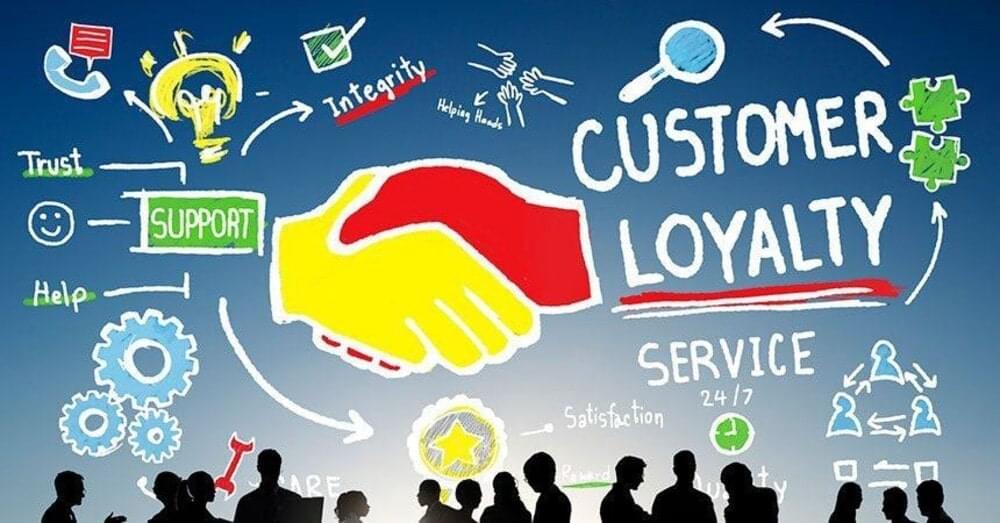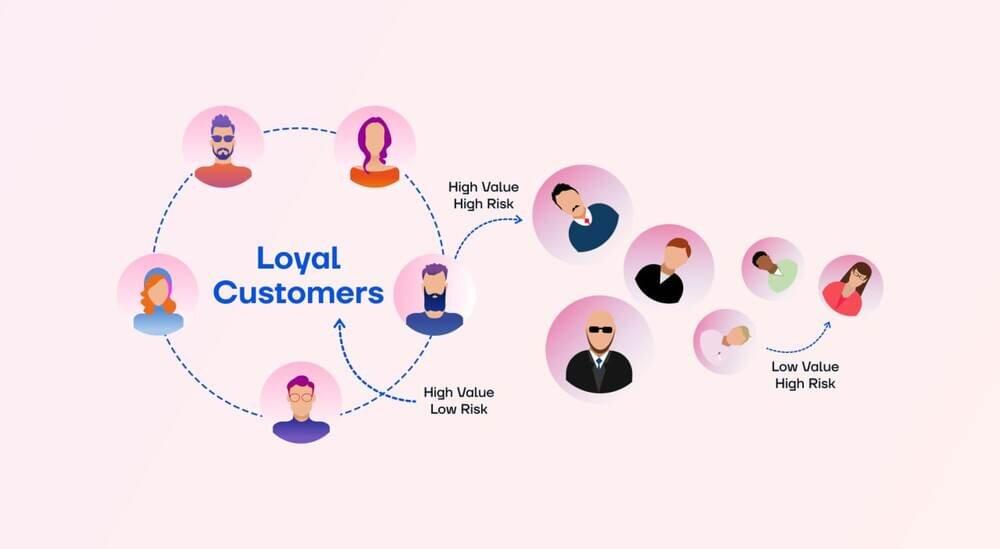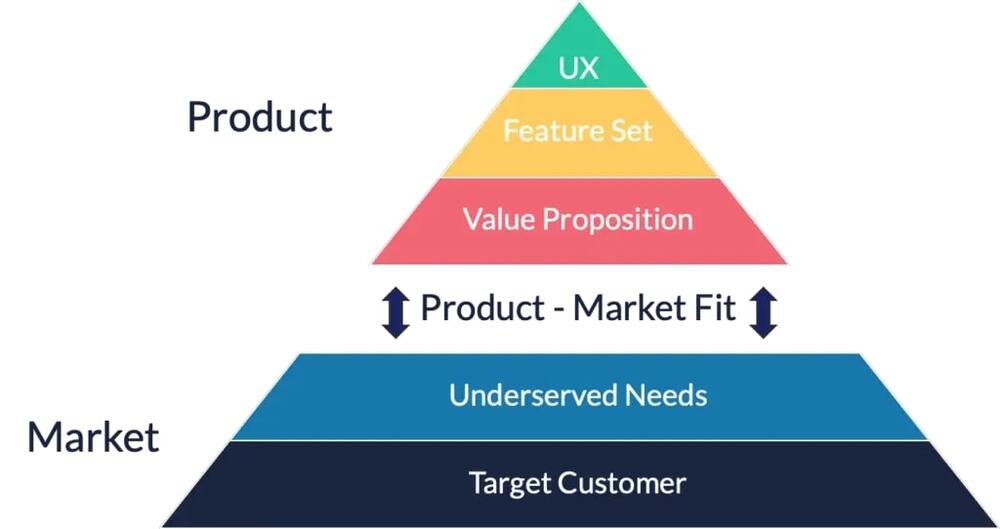
Tips To Stop At-Risk Customers From Churning

In today’s competitive market, it is simply not enough to acquire new customers. Retaining an audience of reliable customers is essential for success. Building an audience is a sound strategy to grow your business. But what about your at-risk customers?
Subscription businesses don’t survive without loyalty from their current supporters. Retention provides consistent revenue and a foundation that your business can rely on during periods of decline. Loyal customers will spend more with your company over time. They are less likely to churn when faced with competitors or personal objections.
It’s always a good idea to invest in customer retention. But it’s even better when you can retain customers who are at risk of churning.Those that have exhibited one or more risk factors such as
- Declining product usage
- Spending less time with your brand
- Communicating more frequently with other brands.
These customers require some extra effort on your part. There most likely not just unhappy - they’re actively looking for something else.
A situational awareness while building relationships with value are the best way to reduce customer churn and keep at-risk churned customers. Here are four tips we’ll dive into to keep customers from leaving
- Customer-Driven Incentives
- Upselling & Cross-selling
- Retention Emails
- Evaluating Churn
Customer-Driven Incentives
Who wouldn’t want incentives to keep shopping with the products they love? Rewarding loyal customers is the best way to keep them coming back.
Discounts and other incentives are a fantastic way to attract new customers. But more importantly, secure your current clientele.
In a subscription business providing discounts for future purchases is powerful. Not only can you guarantee longer memberships. But customers return and buy more to reap their full benefits.
Experimenting with different perks such as
- Limited time to upgrade at a discount
- Discounting members that buy their membership in advanced
- Adding valuable freebies with upgrades

Loyalty programs are also a customer-driven approach to retention. Rewarding loyalty means maintaining & securing your best customers.
Offering them rewards in return for their continued support. Spending money with you rather than looking elsewhere.
Which can be an easy task given the number of competitors fighting for their attention. Incentives should be personal and unique to your company, not some congrats card or grandmas coupon book.
In addition crafting personalized cancelation offers. Encouraging customers to remain subscribed or subscribe longer than they might have. Integrated via emails or directly in your website.
With cancelation offers the customer has reached the edge. They’re committed to canceling your service. This may be your last opportunity to bring them back. You can offer downgrading or prolonging their payment due date.
It’s important to remember that incentives don’t need to be huge to have an impact. It’s the thought you put behind the value and curation of what your audience wants. This will be a contributing factor to whether you can extend retention and increase satisfaction
Keep in mind whatever incentive strategy you implement, understand the “price of reduction”. Offering too many discounts and incentives makes you vulnerable. Compromising your current revenue for a possibility at future value.
Overly incentivizing can depreciate value, in the long run, leaving you with problems much bigger than retention.
Upselling and Cross-Selling Promotions
It’s always easier & less expensive to sell to an existing customer than finding a new one. Upselling and cross-selling enable businesses to sell and retain more customers. Even before the customer makes their first purchase. But How?
Upselling:
providing the same product with different pricing levels. Pricing increases as a product has more added features & advancements
Cross Selling:
Businesses identify products to go with an initial purchase. Expanding the customer journey and selling products that satisfy additional needs.
Upselling and cross-selling encourages customers to buy more than they originally planned. At first glance, it seems like an overly salesy tactic. It actually provides the exact opposite and results in customer loyalty.
Customers will be more likely to stick around if they feel like their needs are being met. That means different price tiers they can afford comfortably.
Understanding as they grow they can upgrade to higher ticket offers.
Creating a feeling of “completeness”. Not having to search around to fulfill further demands. Aware that everything can be bought in-house even if they decide not to buy an upsell or cross-sell proposal immediately.
Your audience will spend more money as they interact and transact with your business. Increasing customer lifetime value. As you guide and integrate them into committing to the services you provide.
Retention Emails
Churn is a natural occurrence in the subscription-based industry. That doesn’t mean we have to sit back and watch it scoop all our clientele. Meet a marketing strategy that is more than capable of combating your churn head-to-head.
Building a retention email plan is key. Emails ensure long-term engagement and the best possible customer experience.
For example, Grammarly does a great job in showcasing concern and pursuing the retention

Factors that often contribute to churn include puzzling onboarding, high pricing, missing features, technical issues, etc.
There are multiple email flows you can craft to solve these problems and strengthen retention. Including but not limited to:
- Post-purchase thank you & onboarding emails
- Abandon cart flows
- Discounts
- Copy heavy, case studies and testimonials
- Value & content emails
- Upselling/cross-selling campaigns
- FAQ’s & tutorials
- Payment reminders & recovery emails
- Surveying & obtaining service feedback
- Excellent & quick customer support
Evaluating Churn
No matter how many tactics we use, you won’t be able to retain customers if you don’t understand their reason for leaving. Churn magnifies all your retention strategies under one roof.

Customers can have numerous reasons for churning. But the most frequent is a customer not receiving the value they expected. Meaning more resources we’re spent on acquisition instead of retention.
Analyzing and evaluating why your customer left allows for revamps. Creating a retention strategy with a higher conversion rate.
It’s not enough to just understand your churn rate. You need to know why customers are leaving and what they’re doing after they leave.
The best way I’ve found to combat churn and recognize a successful retention approach is to listen closely.
Customer feedback is crucial, asking questions about how their needs change over time. It’s important that these conversations happen at different points in the lifecycle. Early on with initial users and later as your product matures.
What is your customer feedback and interaction data telling you? If they want a new feature or that the price is too high, what do you do?
Instead of thinking about what is missing, ask yourself: What problem is my customer trying to solve?
It’s a key part of building your business and making sure your providing what your customer wants. Churn rates can be evaluated by thinking about what problem they are trying to solve.

Churn rates remain high until you can adjust to a product market fit. But once a customer finds what they need from your product, there’s less of a chance that they’ll quit translating to higher retention.
The best thing about churn is that it provides a clear sign of where your business needs improvement to satisfy
Tying It All Together
Retaining your customers is a key factor in building a sustainable and profitable business. Fortunately, there are many strategies available to increasing retention and getting more out of current customers.
The basis of these strategies are solving difficulties and committing to customer satisfaction. Throughout their journey from signup to cancellation
To compete in today’s crowded marketplace, Customer retention strategies aren’t an option. It’s needed in your business structure with an effective purpose.
Retention is not how long you can keep customers in captive. Rather we look at how we can make them happy and satisfied. So they continue subscribing to the fantastic benefits that we offer as a business
Developing a customer retention strategy can reduce the amount of money spent on acquiring new subscribers.
Increasing the amount of revenue generated by loyal subscribers - improving your bottom line in the process.

